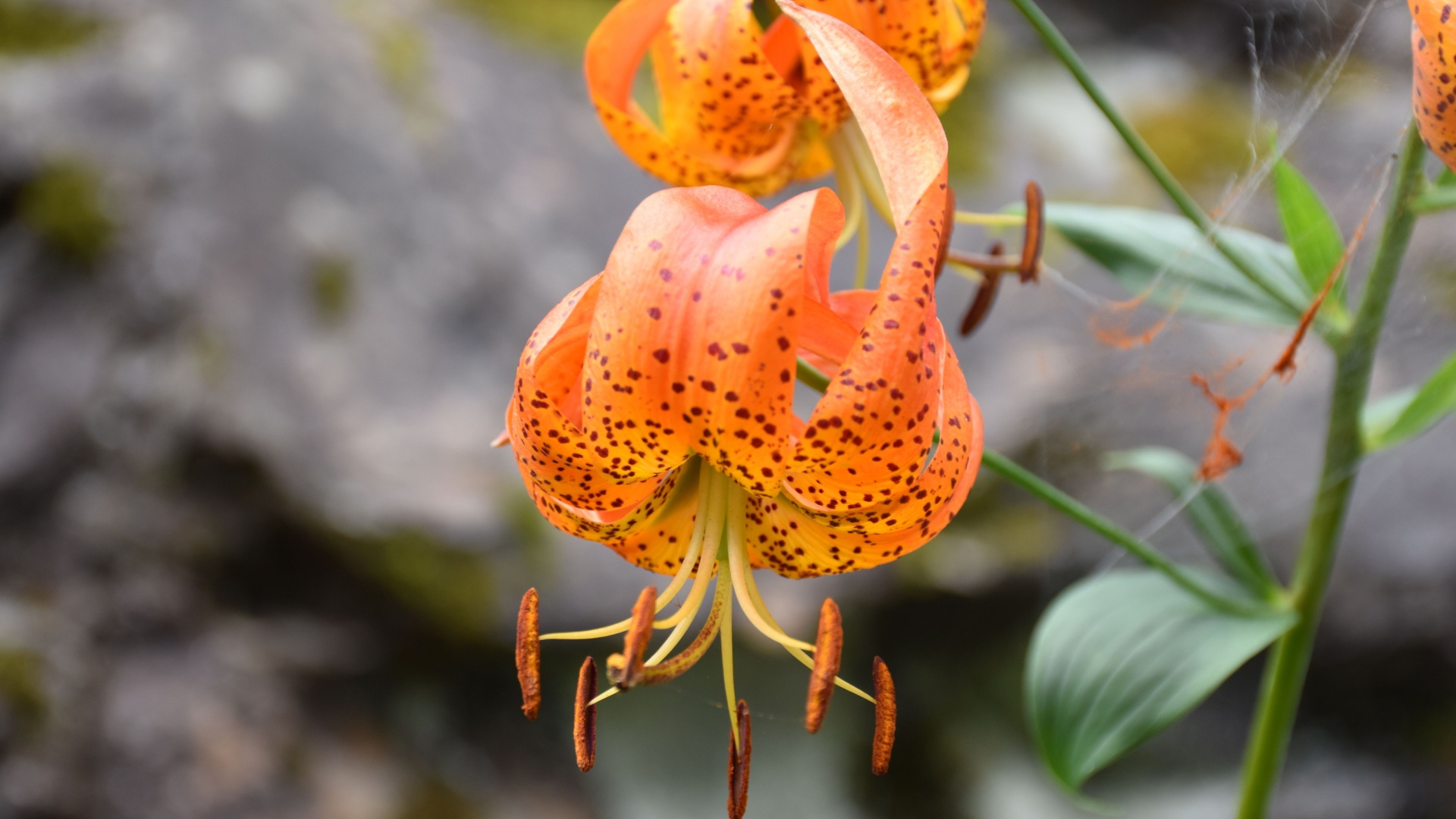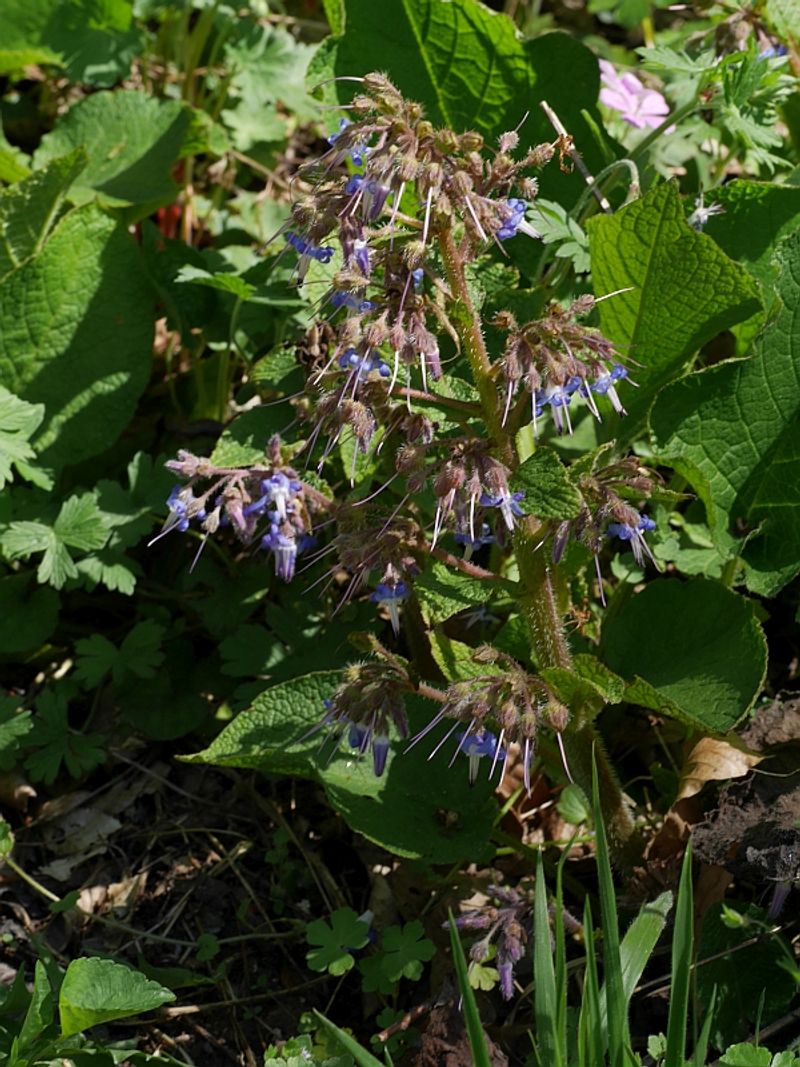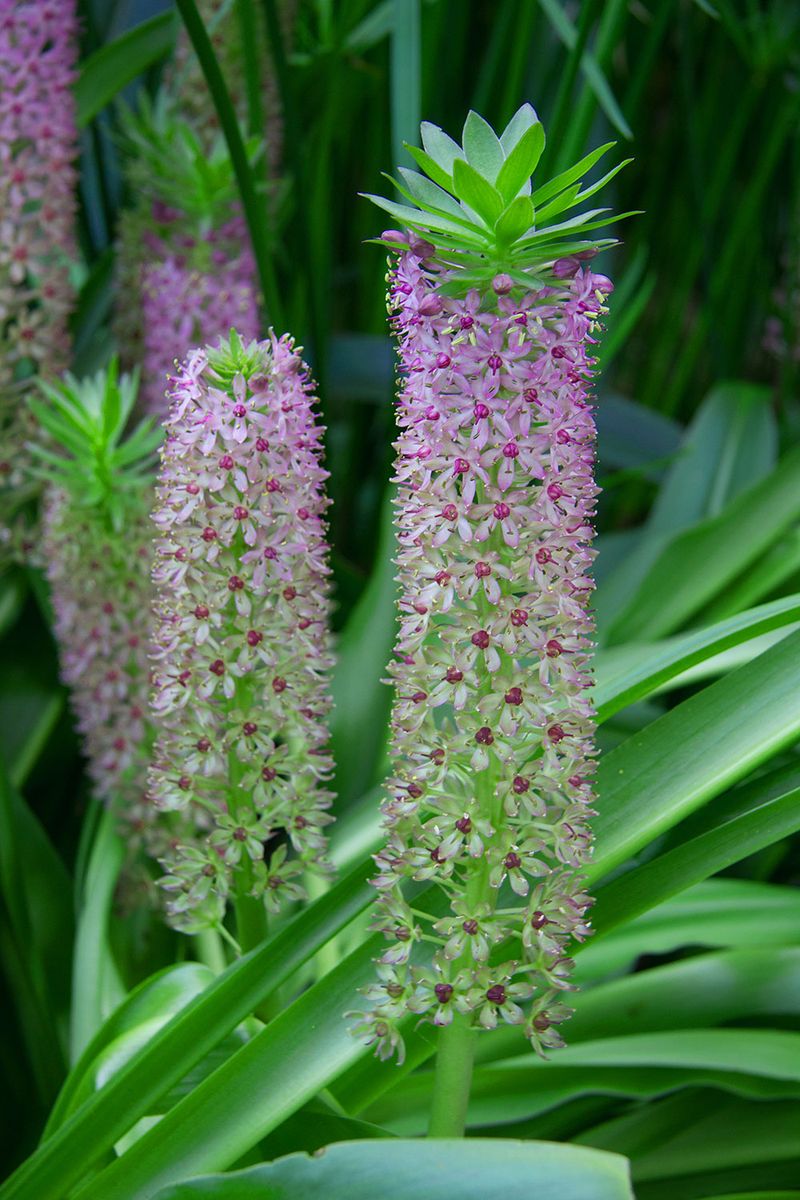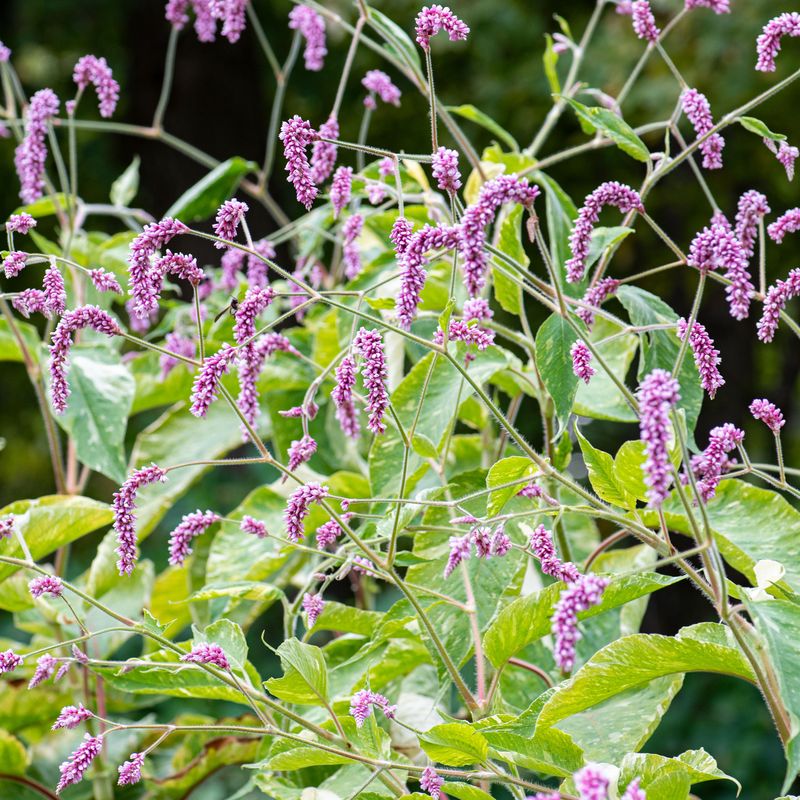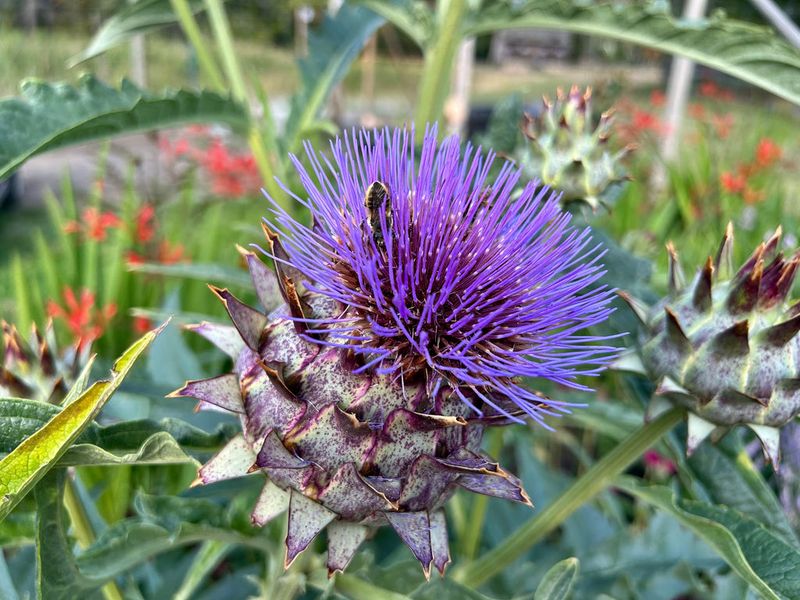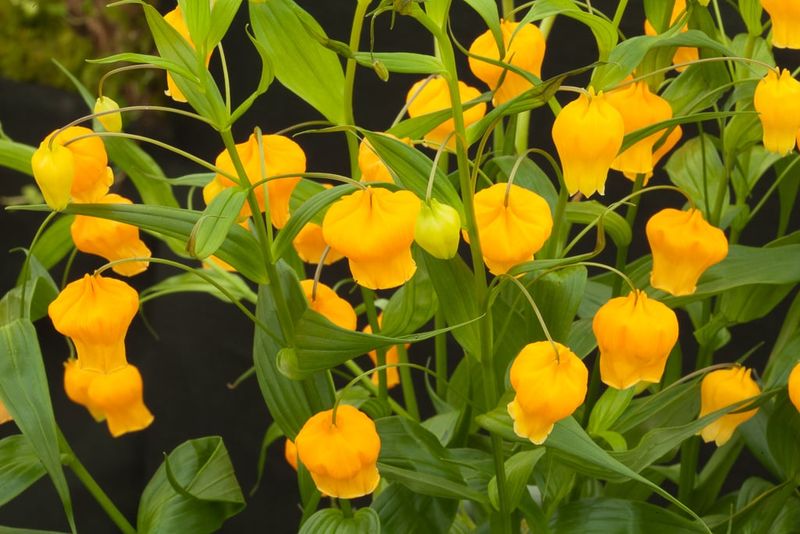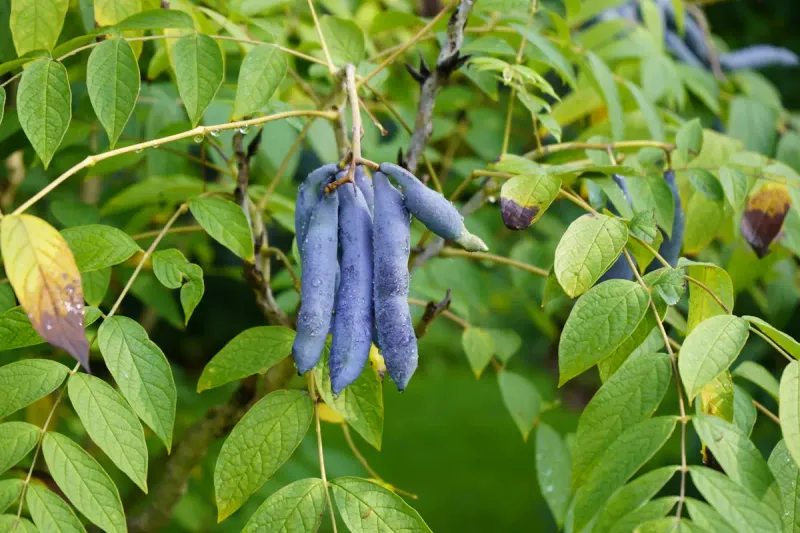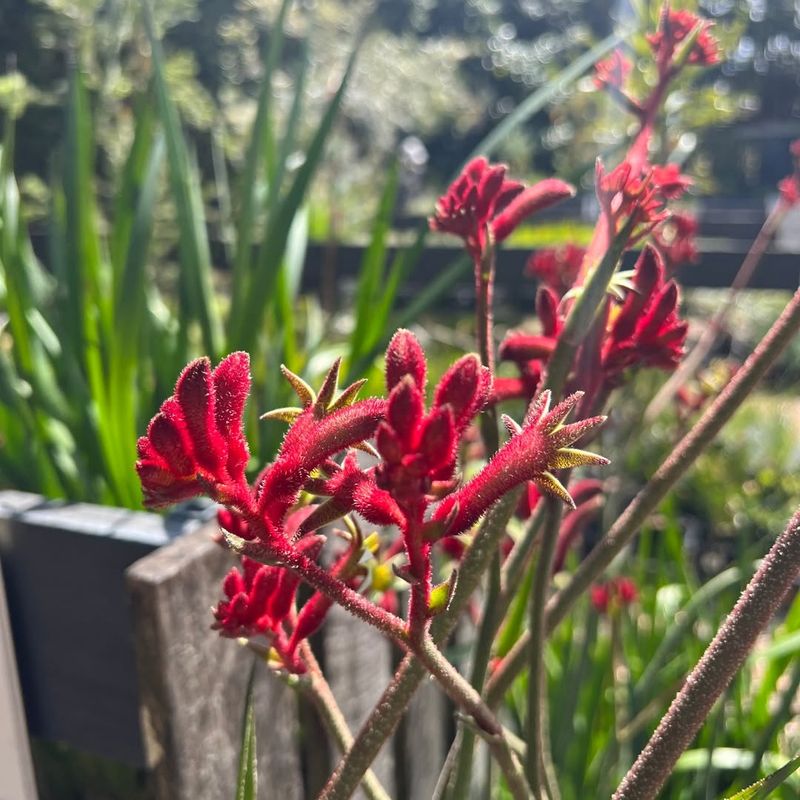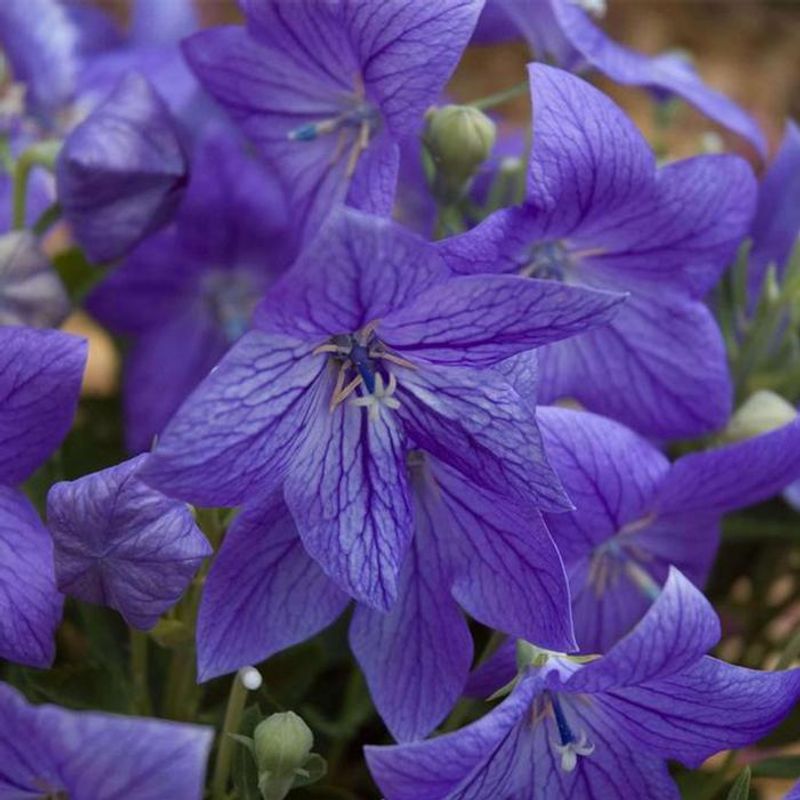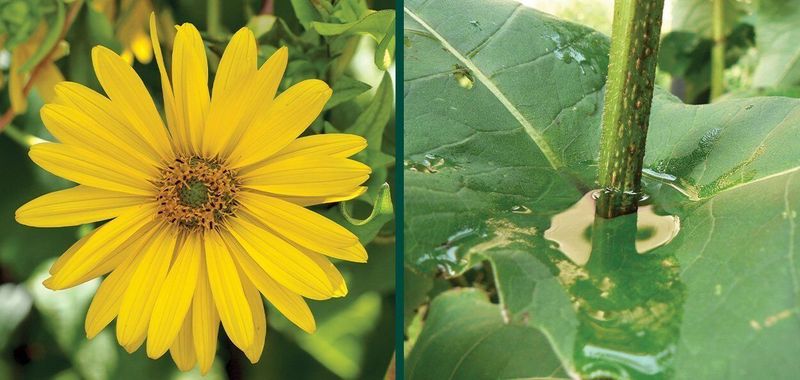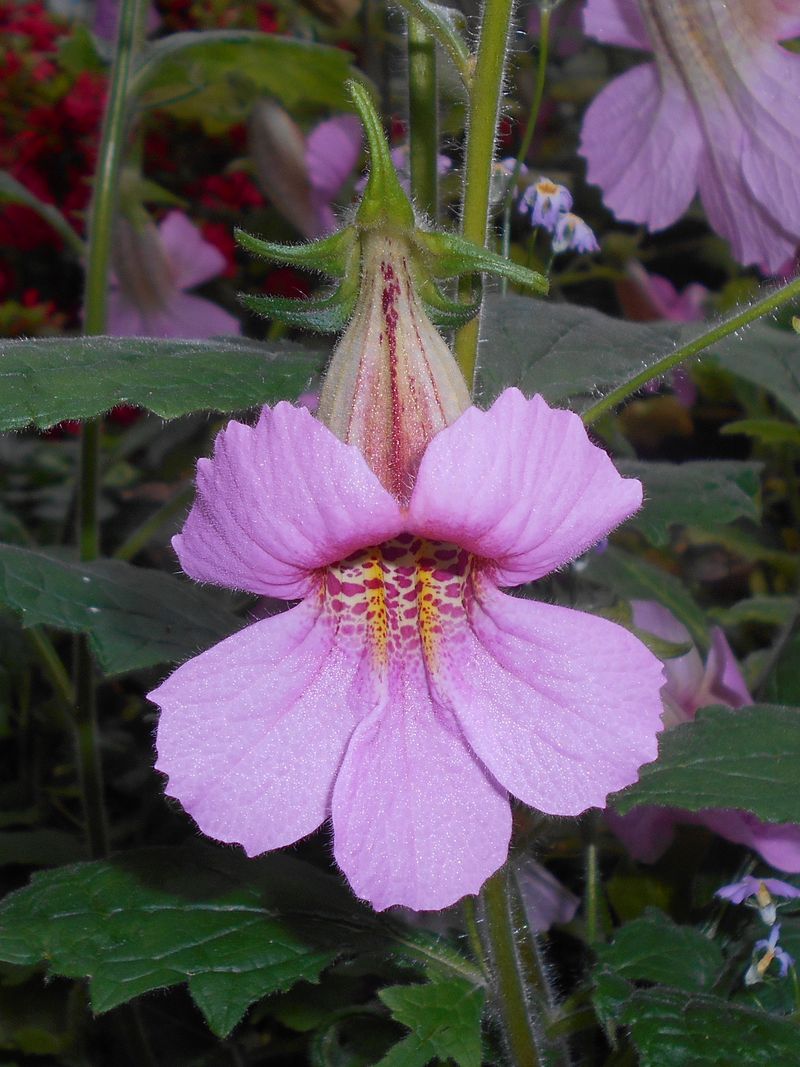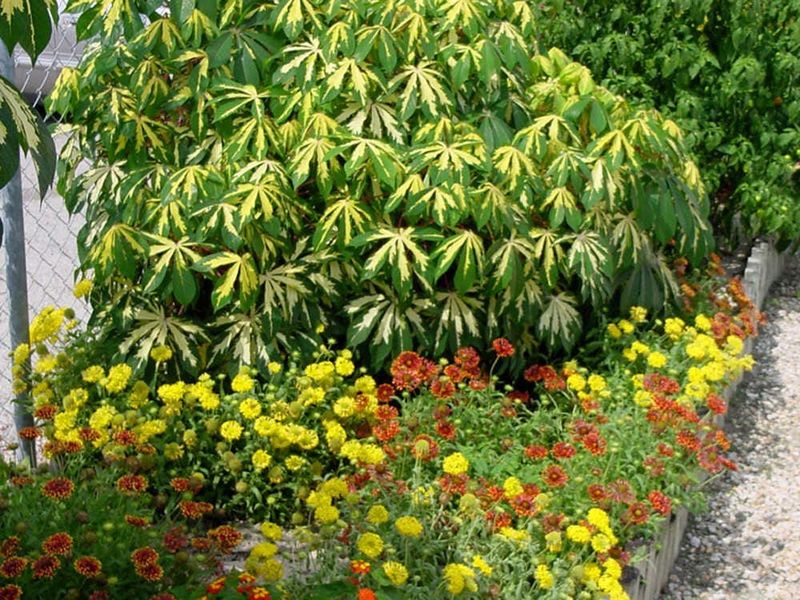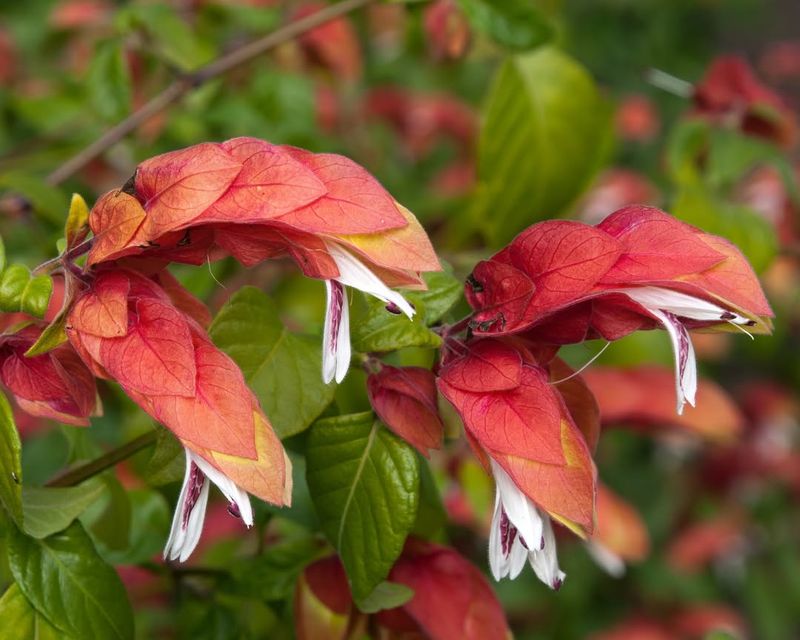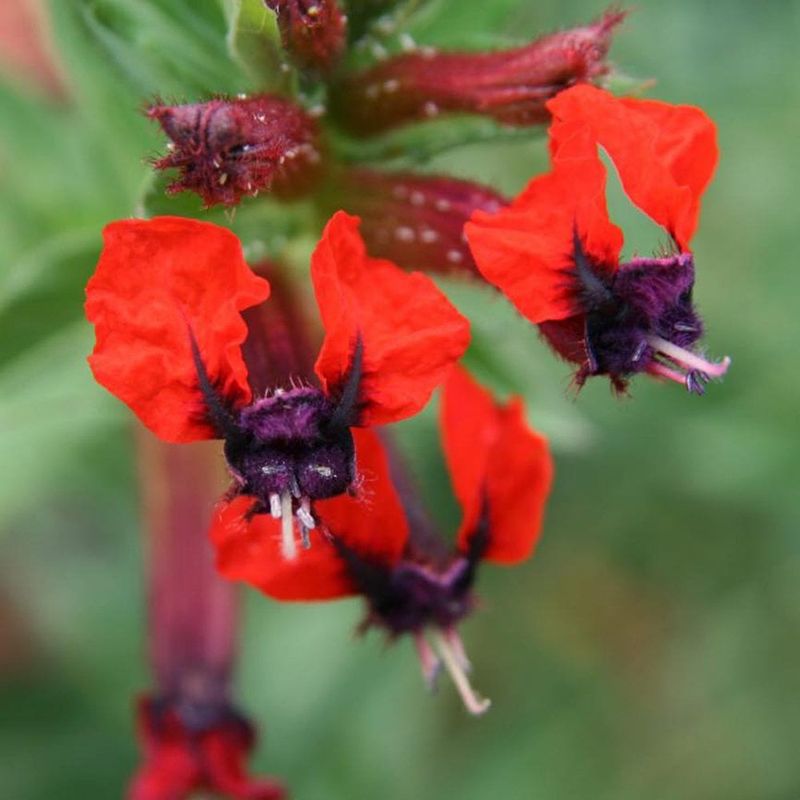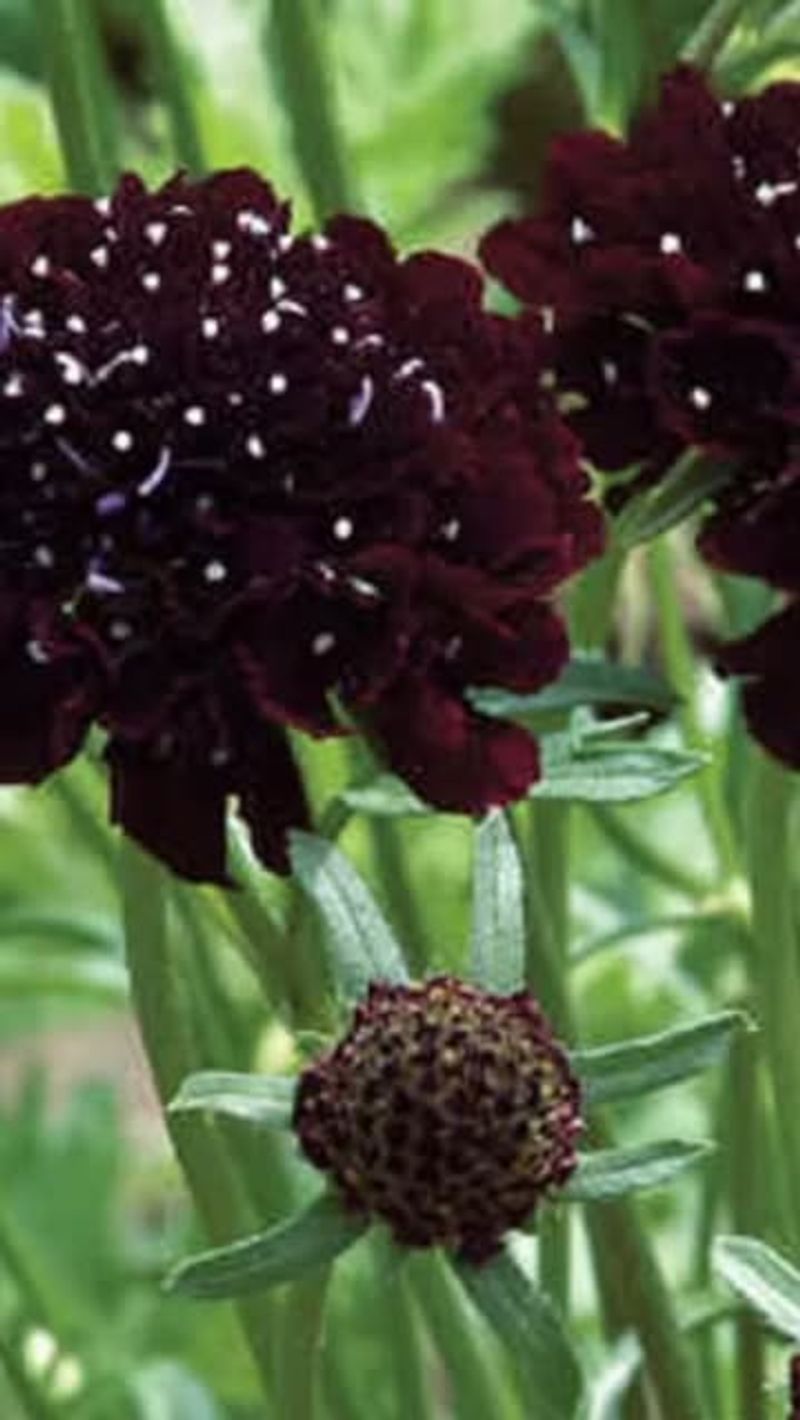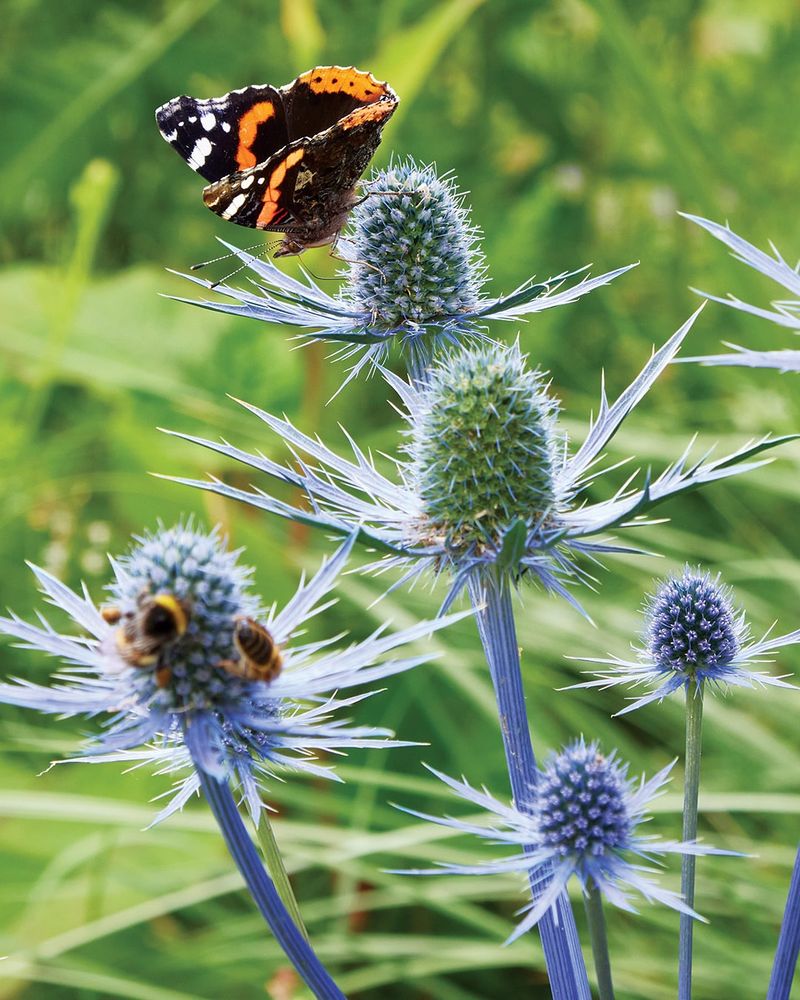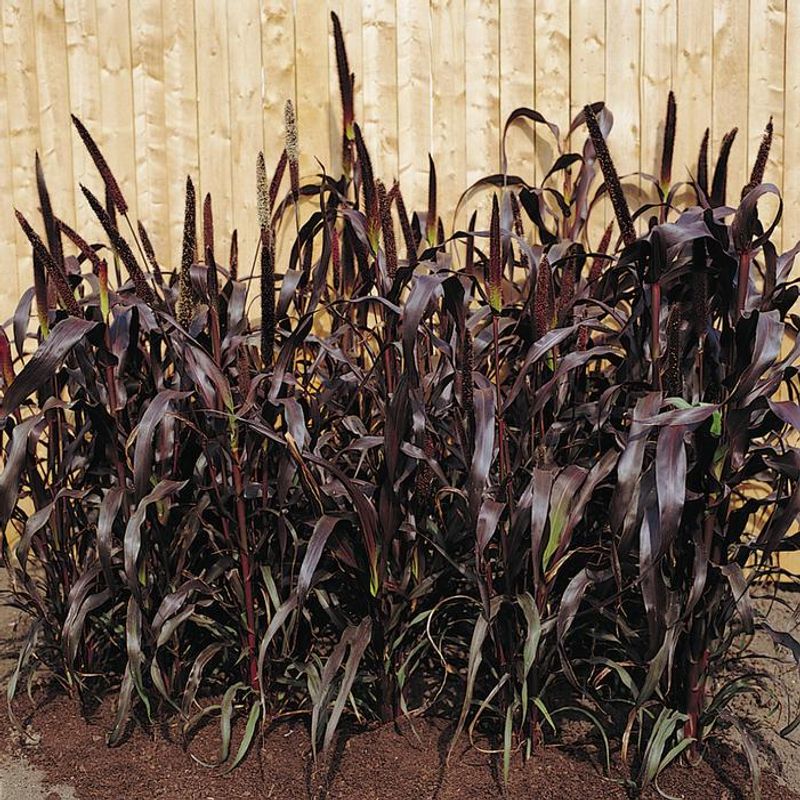Looking to level up your summer garden? Skip the same old petunias and tomatoes—these 20 incredible plants are the hidden gems you didn’t know you needed.
From heat-loving bloomers to quirky showstoppers, each one brings bold color, resilience, or unique charm to your outdoor space. Rarely seen, but seriously worth growing.
1. Turkish Cap (Trachystemon orientalis)
Hardy and shade-loving, Turkish Cap produces clusters of striking blue flowers in late spring before unfurling massive heart-shaped leaves that create a lush summer carpet. Native to Turkey and the Caucasus, this plant thrives in spots where others struggle.
Once established, it needs almost no care and spreads slowly to form impressive ground cover. The young leaves are actually edible and used in Turkish cooking, adding a cucumber-like flavor to spring dishes.
2. Pineapple Lily (Eucomis)
Resembling miniature pineapples topped with tufts of green leaves, these exotic-looking blooms will stop visitors in their tracks. The flower stalks rise dramatically above strap-like foliage, creating vertical interest in borders or containers.
Available in colors ranging from white to deep purple, Pineapple Lilies perform best in full sun and well-drained soil. Their long-lasting flowers make excellent cut arrangements, and the dried seed heads provide winter interest.
3. Kiss-Me-Over-the-Garden-Gate (Polygonum orientale)
Despite its tongue-twisting name, this Victorian-era favorite deserves a comeback in modern gardens. Growing up to 8 feet tall, its cascading chains of tiny pink flowers dangle like natural jewelry throughout summer and into fall.
Butterflies adore this annual, while its height makes it perfect for the back of borders. Thomas Jefferson grew this charmer at Monticello, appreciating its old-world elegance. Plant seeds directly in the garden after frost danger passes for dramatic vertical impact.
4. Cardoon (Cynara cardunculus)
Imagine artichokes on steroids with silvery-blue foliage that commands attention from across the yard. Cardoon’s architectural presence creates drama whether planted solo or in groups, with stunning purple thistle-like flowers appearing in late summer.
Mediterranean gardeners have grown this perennial for centuries, prizing both its ornamental qualities and edible stalks. Hardy in zones 7-10, it tolerates drought once established and reaches impressive heights of 5 feet or more. Bees absolutely swarm to its nectar-rich blooms.
5. Chinese Lantern Lily (Sandersonia aurantiaca)
Hanging like tiny paper lanterns along graceful arching stems, the bright orange blooms of Sandersonia bring a touch of Asian elegance to summer gardens. Native to South Africa (despite its common name), this rare bulb creates a magical effect when mass-planted.
Growing just 18-24 inches tall, Chinese Lantern Lilies thrive in partial shade and rich, well-drained soil. The cut flowers last remarkably long in arrangements. Plant the tubers in spring after soil warms, and lift them in fall in colder regions.
6. Blue Sausage Fruit (Decaisnea fargesii)
Few plants prompt more double-takes than this unusual shrub when its metallic blue, sausage-shaped fruits appear in late summer. Native to China, Blue Sausage Fruit grows into a graceful 10-foot shrub with tropical-looking compound leaves. Yellow flowers appear in spring, but the bizarre blue pods steal the show by August. The gelatinous pulp inside is actually edible with a mild melon flavor. Hardy to zone 6, this conversation piece requires minimal maintenance and performs best in rich, moist soil.
7. Kangaroo Paw (Anigozanthos)
Straight from the Australian outback, these fuzzy flowers resemble animal paws reaching skyward on tall stems. The velvety blooms come in fiery colors from yellow to deep red, creating a striking vertical element in summer gardens.
Hummingbirds can’t resist Kangaroo Paws, which prefer full sun and excellent drainage. Though typically grown as annuals in cooler climates, they’re perennial in zones 9-11. The fuzzy texture adds wonderful contrast to smooth-leaved plants, making them standouts in mixed containers.
8. Balloon Flower ‘Mariesii’ (Platycodon grandiflorus)
Watching balloon flowers open is garden magic at its finest. The puffy buds literally look like inflated balloons before popping open into starry blue blossoms. ‘Mariesii’ is a compact variety reaching just 18 inches tall, perfect for borders and containers.
Kids especially love these quirky flowers that bloom throughout summer. Unlike many perennials, Balloon Flowers develop a taproot and resent disturbance, so choose their spot carefully. The dried seed heads provide winter interest, standing up beautifully to snow and ice.
9. Red Lightning (Lysimachia ephemerum)
Slender spires of pristine white flowers with contrasting red stamens rise like lightning bolts from rosettes of blue-gray foliage. Growing 3-4 feet tall, Red Lightning creates vertical drama without staking or support. Unlike its aggressive cousin purple loosestrife, this well-behaved perennial stays where you plant it.
The flower spikes last for weeks in midsummer and attract beneficial insects. Surprisingly drought-tolerant once established, Red Lightning performs beautifully in average garden soil with full sun.
10. Chocolate Cosmos (Cosmos atrosanguineus)
Velvety deep maroon flowers emit a genuine chocolate scent on warm summer evenings, making this Mexican native truly magical. The rich color provides dramatic contrast against silver foliage plants and glows beautifully in twilight gardens.
Unlike common cosmos, this variety grows from tubers that can be overwintered indoors in colder climates. Plant them in containers near patios to enjoy their sweet fragrance up close. Reaching about 30 inches tall, Chocolate Cosmos makes an excellent cut flower that brings its delicious scent indoors.
11. Cup Plant (Silphium perfoliatum)
Native prairie plants don’t get more fascinating than Cup Plant with its large leaves that join around the square stem to form water-collecting cups after rain. Goldfinches and butterflies flock to drink from these natural reservoirs while enjoying the cheery yellow flowers.
Towering 6-8 feet tall, Cup Plant creates dramatic height in naturalistic gardens. The daisy-like blooms appear for weeks in midsummer atop sturdy stems that never need staking. Being native to central North America, it’s incredibly resilient to weather extremes once established.
12. Chinese Foxglove (Rehmannia elata)
Looking like foxgloves that bloom all summer, these tubular rose-pink flowers create months of color when traditional foxgloves have long finished. Growing 2-3 feet tall, Chinese Foxglove produces multiple flowering stems from a basal rosette of fuzzy leaves.
Hummingbirds battle for access to the nectar-rich blooms that appear from June until frost. Unlike true foxgloves, Rehmannia thrives in partial shade and appreciates regular moisture. Hardy in zones 7-10, it can be grown as a spectacular container specimen in colder regions.
13. Variegated Tapioca (Manihot esculenta ‘Variegata’)
Dramatic star-shaped leaves splashed with creamy white and pink make this tropical plant a showstopper in summer gardens. Yes, it’s the same species that produces cassava root, but this ornamental variety is grown purely for its spectacular foliage.
Growing 4-6 feet in a single season, Variegated Tapioca creates a tropical feel in northern gardens. Plant it in containers or beds after all frost danger passes. The stems develop a reddish tint that enhances the plant’s exotic appearance, especially when backlit by morning or evening sun.
14. Drumstick Allium (Allium sphaerocephalon)
Burgundy egg-shaped flower heads bobbing on slender 2-foot stems create a magical effect when planted in drifts. These summer-blooming bulbs emerge after spring alliums finish, extending the season with their quirky charm.
Bees absolutely cover the flowers during their July bloom time. The oval heads start green and gradually darken to wine-red, providing weeks of evolving color. Plant these inexpensive bulbs by the dozens in fall for dramatic summer impact. They naturalize readily in well-drained soil and full sun.
15. Shrimp Plant (Justicia brandegeeana)
Dangling bracts resembling pink shrimp tails make this Mexican native a conversation starter in summer gardens. The overlapping bracts protect tiny white flowers and provide months of color from June through October. Growing 2-3 feet tall and wide, Shrimp Plant thrives in morning sun and afternoon shade. Hummingbirds visit regularly for nectar.
Though tender in zones below 9, it makes an outstanding container specimen that can overwinter indoors near a bright window. Regular pruning keeps plants bushy and floriferous.
16. Bat-Faced Cuphea (Cuphea llavea)
Look closely at these whimsical flowers and you’ll see tiny bat faces with purple ears and red snouts. This Mexican native blooms non-stop from June until frost, creating a constant buzz of hummingbird and butterfly activity.
Growing just 18-24 inches tall and wide, Bat-Faced Cuphea forms a tidy mound perfect for containers or front-of-border positions. Heat and drought only intensify its flowering. Though technically perennial in zones 9-11, it’s worth growing as an annual anywhere for its unique flowers and wildlife appeal.
17. Pincushion Flower ‘Black Knight’ (Scabiosa atropurpurea)
Nearly black velvet flowers with contrasting white stamens create dramatic impact in summer gardens. ‘Black Knight’ pincushion flower produces dozens of these sophisticated blooms on wiry stems perfect for cutting.
Butterflies can’t resist the nectar-rich flowers that appear continuously from June through September. Growing 24-30 inches tall, this cottage garden classic combines beautifully with silver foliage plants. The unusual color makes it a designer’s favorite for adding depth to garden color schemes.
18. Himalayan Honeysuckle (Leycesteria formosa)
Pendant chains of white flowers nestled in burgundy bracts dangle like exotic jewelry from bamboo-like stems. Also called Pheasant Berry, this unusual shrub creates a tropical effect in temperate gardens, reaching 6 feet in a single season.
Purple-black berries follow the flowers, attracting birds in late summer. The hollow stems add winter interest with their green color. Hardy in zones 7-10, Himalayan Honeysuckle may die back in cold winters but regrows vigorously from the base, flowering on new growth each summer.
19. Giant Sea Holly (Eryngium giganteum)
Nicknamed ‘Miss Willmott’s Ghost’ after the eccentric gardener who secretly scattered its seeds in gardens she visited, this biennial creates silvery architectural beauty. Thistle-like flowers surrounded by spiky silver bracts appear in midsummer, standing out dramatically against green garden backgrounds.
Growing 3-4 feet tall, Giant Sea Holly thrives in poor soil and drought conditions. The cut flowers last for weeks in arrangements and dry beautifully for winter displays. Bees adore the nectar-rich blooms, which develop metallic blue tints as they mature.
20. Ornamental Millet ‘Purple Majesty’ (Pennisetum glaucum)
Rising like purple corn stalks in the garden, this dramatic grass creates vertical excitement with its deep burgundy foliage and bottle-brush seedheads. Growing 4-5 feet tall, ‘Purple Majesty’ develops its richest color in full sun.
The caterpillar-like seed spikes emerge green, mature to purple, and finally turn tan, providing ever-changing interest. Birds flock to the seeds in fall. Plant this annual grass as a specimen or in groups for maximum impact. The cut stems make striking additions to late summer arrangements.

